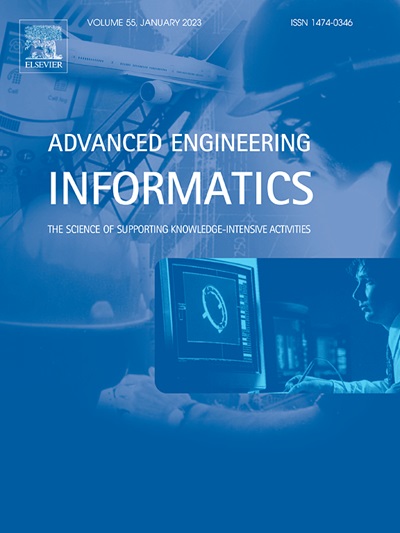Revealing the hidden correlations of elements in intelligent transportation systems with a novel knowledge graph-based path calculation approach
IF 8
1区 工程技术
Q1 COMPUTER SCIENCE, ARTIFICIAL INTELLIGENCE
引用次数: 0
Abstract
Intelligence has emerged as an integral trend within Intelligent Transportation Systems (ITS), making the comprehension of interrelations among its key elements critical for unveiling potential influence mechanisms. To foster research in this domain, we present an innovative method aimed at unearthing explainable correlations among these pivotal ITS elements. Our approach is underpinned by two primary stages: the construction of a knowledge graph drawn from ITS-related patents, followed by the application of an enhanced breadth-first path calculation algorithm. This novel algorithm carefully balances consideration between element correlations and the structural nuances of the knowledge graph. To verify the robustness of our algorithm, we engage in meticulous node similarity calculations and undertake an assessment of its effectiveness using an array of performance indicators. Furthermore, to provide practical insight, we offer two case studies exploring the correlation among elements within the realms of Vehicle-to-Everything (V2X) communication system and smart logistics center. These case studies not only validate the method’s effectiveness but also illustrate its broad applicability. Our method’s utility extends beyond merely unraveling evolution mechanisms and forecasting development trends within transportation systems, and it has the potential to significantly contribute to correlation research across a broad spectrum of fields.
用一种新的基于知识图的路径计算方法揭示智能交通系统中要素之间的隐性关联
智能化已成为智能交通系统(ITS)不可或缺的发展趋势,因此理解其关键要素之间的相互关系对于揭示潜在的影响机制至关重要。为了促进这一领域的研究,我们提出了一种创新方法,旨在发现这些关键智能交通系统要素之间可解释的相互关系。我们的方法主要分为两个阶段:从智能交通系统相关专利中构建知识图谱,然后应用增强型广度优先路径计算算法。这种新颖的算法仔细平衡了元素相关性和知识图谱结构上的细微差别。为了验证算法的稳健性,我们进行了细致的节点相似性计算,并使用一系列性能指标对算法的有效性进行了评估。此外,为了提供实用的洞察力,我们提供了两个案例研究,探讨了车对物(V2X)通信系统和智能物流中心领域中各要素之间的相关性。这些案例研究不仅验证了该方法的有效性,还说明了其广泛的适用性。我们的方法不仅能揭示交通系统的演变机制和预测其发展趋势,还能为各领域的相关性研究做出重要贡献。
本文章由计算机程序翻译,如有差异,请以英文原文为准。
求助全文
约1分钟内获得全文
求助全文
来源期刊

Advanced Engineering Informatics
工程技术-工程:综合
CiteScore
12.40
自引率
18.20%
发文量
292
审稿时长
45 days
期刊介绍:
Advanced Engineering Informatics is an international Journal that solicits research papers with an emphasis on 'knowledge' and 'engineering applications'. The Journal seeks original papers that report progress in applying methods of engineering informatics. These papers should have engineering relevance and help provide a scientific base for more reliable, spontaneous, and creative engineering decision-making. Additionally, papers should demonstrate the science of supporting knowledge-intensive engineering tasks and validate the generality, power, and scalability of new methods through rigorous evaluation, preferably both qualitatively and quantitatively. Abstracting and indexing for Advanced Engineering Informatics include Science Citation Index Expanded, Scopus and INSPEC.
 求助内容:
求助内容: 应助结果提醒方式:
应助结果提醒方式:


